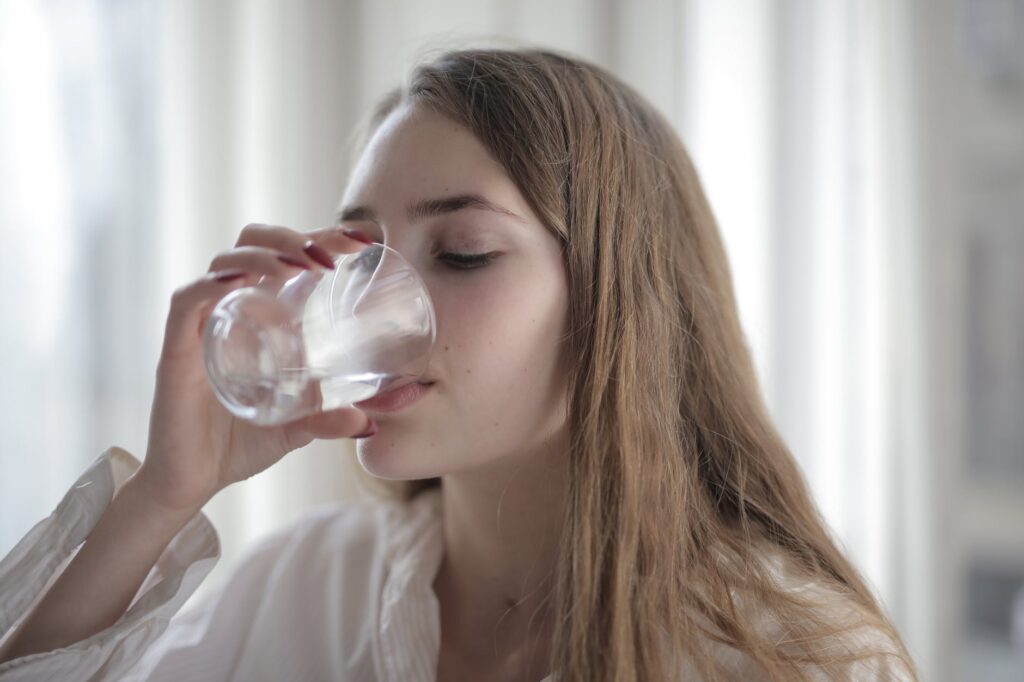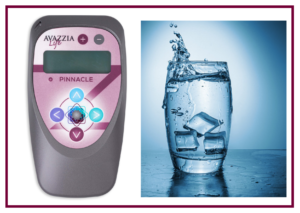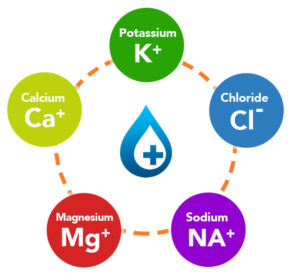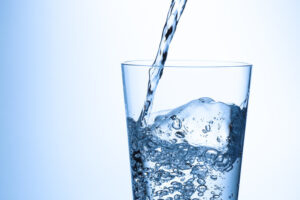
We all know how important hydration is for staying healthy, but did you know that staying adequately hydrated is one of the key elements to a successful microcurrent therapy session? Many microcurrent beginners don’t realize how important hydration is when it comes to conducting their protocols. In this blog post, you will learn how something as simple as water can maximize your microcurrent results and how to make sure your body has a healthy balance of electrolytes.
What Causes Dehydration?
Dehydration occurs when you use more fluid than you take in, making your body incapable of carrying out its usual functions. When lost fluids aren’t replaced, you will get dehydrated. Insufficient hydration is particularly dangerous for older adults and young children as it can precursor various health complications, including urinary and kidney issues, seizures, low blood volume, and heat injury.
The good news is that you can reverse mild to moderate dehydration by consuming more fluids, but immediate medical treatment may be required in cases of severe dehydration.
Microcurrent and Hydration: A Perfect Pairing

If you plan to receive microcurrent therapy, whether at home or in the office, you should first ensure you are well hydrated – typically drinking around 16oz. of water before treatment should help.
Here’s why…adequate hydration helps promote electrical stimulation.
After all, your body is primarily water, and adequately hydrated cells will conduct electric current better; thus, your treatment is likely to be more effective.
Dehydration and “Active Zones”
You may be surprised to learn that the human body has resistance to current flow. More than 99% of the body’s resistance to this electric current flow is located in the skin. Generally, the skin’s resistance can be measured via proper hydration and electrolytic content. This resistance is measured in ohms (Ω).
When a random area or point of pain zone becomes sticky or drags as you guide your Microcurrent device’s electrodes over the skin, it usually means that you have found an “active zone.” Other signs can be redness, paleness, or a change in the device’s sound as you run it over the area of concern. This can be remedied with additional microcurrent protocols and the consumption of water.
Electrolytes: What They Are and Why You Need Them

Electrolytes are chemicals that conduct electricity when combined with water. And by now, you know your entire body is electrical—that’s why microcurrent therapy is so efficient at improving impaired communication in your body due to injury or illness.
To learn more about electrolyte drinks and to get 3 low-sugar electrolyte drink recipes, read our blog post here.
Or watch Dr. Rob Vanbergen’s short video below:
Fun fact: did you know that bone broth is an excellent substitute for sugary chemical-laden sports drinks? Talk about a double-duty dinner!
How Electrolytes Help with Pain Management
Your body needs electrolytes to regulate blood pressure, rebuild damaged tissue, balance fluids, and facilitate proper nerve signaling. So, if you have an imbalance of electrolytes, you can expect healing to take longer. You could also experience stronger pain impulses due to defective nerve signaling.
How Much Water Should I Drink Every Day?

According to Mayo Clinic, how much water you should be drinking depends on many factors, including how active you are, your health, and the climate where you live. A safe estimate for a healthy adult living in a temperate environment is about 15.5 cups of fluid for a man and 11.5 cups for a woman daily. It is important to remember that around 20% of your daily fluid typically comes from food, so be sure to stock up on hydrating foods like cucumbers, lettuce, celery, and watermelons.
Added Benefits of Staying Hydrated: Skin, Hair, and More!
Aside from maximizing the efficacy of your microcurrent treatment, staying properly hydrated affects almost every primary system in your body, including:
- Hair: Water is vital for soft, glossy, and healthy hair. Proper hydration will help your hair grow long and strong and help to reduce frizz and tangles.
- Skin: Dehydrated skin is dull, dry, and itchy with an overall uneven complexion, making wrinkles and fine lines more visible. A 2015 study found that increased water intake (over 3.2 liters) positively impacts skin physiology.
- Lymph nodes: Your immune system uses lymph to circulate nutrients and white blood cells through your entire body. Water is essential to produce lymph, and without it, your white blood cells wouldn’t be able to travel throughout the body to fight off illness and disease.
- Blood: So be sure to keep your water intake up to keep your circulatory system healthy.
- Detoxification: If you are dehydrated, your kidneys won’t remove toxins from your body as effectively.
- Digestion: Dehydration and constipation are connected. Drinking plenty of unsweetened beverages will keep everything flowing as it should.
So, drink up and see how it improves your overall health!
The 5 Best Drinks to Beat Dehydration
Now that we’ve helped you understand the importance of hydration for optimum microcurrent success, you may be brainstorming how you’ll stay on top of your fluid intake. In that case, allow us to recommend our 5 favorite healthy ways to rehydrate.
- Water: Nothing beats dehydration quite like good old H2O. Remember to carry a refillable water bottle with you when you leave the house, so you’re never more than an arm’s reach away from a sip of crisp, refreshing water.
- Electrolyte drinks: Electrolyte drinks are a great way to replenish quickly when you’ve been sweating a lot during a workout and are feeling under the weather. But remember always to check the label as store-bought versions tend to come loaded with sugar, artificial flavorings, and dyes. Better yet, make your own with one of our 3 recipes here.
- Herbal Tea: Herbal teas are fun for the taste buds, and many of them come with added health benefits like a boosted metabolism, a more relaxed nervous system, improved brain cognition, and pain relief.
- Coconut water: Think of coconut water as nature’s sports drink. It contains five electrolytes: calcium, phosphorus, potassium, magnesium, and sodium. But remember, like a store-bought sports drink, coconut water has sugar content in the form of natural glucose and fructose.
- Fruit-infused water: Having a pitcher of delicious and refreshing infused water in your refrigerator is an easy way to encourage proper hydration. For best results, put all your ingredients in a glass jar, decanter, or jug and allow to soak for at least 4 hours or overnight. When it comes to your fruits, vegetables, and herbs, you will want to go with organic, when possible, to avoid adding pesticides to your drink.
7- Simple and Delicious Water Infusions to Try:
There’s really no wrong way to mix up infused water. Here are some of our favorite flavor combinations to try:
- Basil and watermelon
- Cucumber and mint
- Lime and cherry
- Pineapple and basil
- Apple and cinnamon
- Lemon, blueberry, and rosemary
- Mint, grapefruit, and pomegranate
Sources cited:
Dehydration – Symptoms and causes – Mayo Clinic
Dietary water affects human skin hydration and biomechanics (nih.gov)
Hydration levels affect cardiovascular health, new study finds — ScienceDaily
Mild dehydration: a risk factor of constipation? – PubMed (nih.gov)





